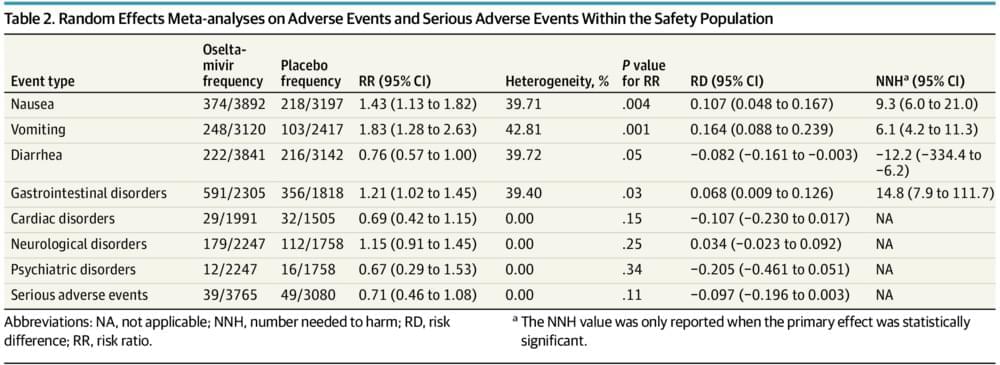The company’s rockets are ferrying astronauts, launching satellites and dominating any competition.






May people worry that infectious pathogens will become resistant to current first-line therapies like antibiotics. Bacteria and other infectious diseases evolve and change to meet the needs of their environment and overcome treatments like these. Cancer is a well-known case in which the tumor cells evolve and become resistant to immunotherapy and other targeted treatments. Cancer is a prime example, because it rapidly divides and the mechanism by which it progresses allows tumor cells to avoid or overcome therapies. However, bacterial diseases are also common infections that can rapidly evolve. The World Health Organization (WHO) has even warned against a time in which antibiotics will not work. If this were the case, minor illnesses such as the common cold, could become fatal. The worry of antibiotic resistance is partly the reason we get yearly vaccinations. The Center for Disease Control (CDC) best predicts which viral infections will persist in the following year. A multitude of data is included in this prediction including the following:

Influenza, or the “flu,” is a viral respiratory infection that commonly affects the nose, throat, and lungs. Some symptoms of flu infection include fever, muscle ache, headache, dry cough, shortness of breath, general malaise, and more. Most healthy people with active flu infections can fight off the infection with their immune systems, however, certain high-risk groups may be prone to developing complications, such as children under 2 years old, adults over 65 years old, those that are pregnant, those with weakened immune systems, those with chronic illnesses, and those with a body mass index of 40 or higher.
The influenza vaccine is a preventative vaccine that reduces the chances of a patient having severe complications from the virus. Even after preventative measures such as the influenza vaccine, some adults remain at high risk for hospitalization following an infection. That is where flu antiviral drugs come in; antiviral drugs are medications that assist your body in fighting viruses.
The most common antiviral for the flu is Tamiflu, generically known as oseltamivir. Oseltamivir is a neuraminidase inhibitor and was approved by the United States Food and Drug Administration in 1999. When oseltamivir is started within two days of flu symptoms and confirmed flu infection, it can shorten length of illness along with a decrease in overall symptoms. This is especially useful in high-risk populations who may be able to prevent a hospitalization after taking oseltamivir.

Importance Despite widespread use, summary evidence from prior meta-analyses has contradictory conclusions regarding whether oseltamivir decreases the risk of hospitalization when given to outpatients. Several large investigator-initiated randomized clinical trials have not yet been meta-analyzed.
Objective To assess the efficacy and safety of oseltamivir in preventing hospitalization among influenza-infected adult and adolescent outpatients.
Although there are several methods of 3D-printing metal objects, all of them involve the application of heat – which isn’t conducive to producing certain heat-sensitive electronics, among other things. A new gel, however, can be used to print such items at room temperature.
Created by a team of scientists at North Carolina State University, the material starts out as a solution consisting of copper microparticles suspended in water. Microparticles of another metal, known as eutectic gallium indium alloy (EGaIn) are then added, as is hydrochloric acid.
The latter sets the pH of the water to 1.0, removing oxides from the EGaln and thus temporarily turning it to a liquid-metal state. This causes the EGaln particles (now globules) to cling to the firmer copper particles, forming a network of copper particles connected by EGaln bridges. Methylcellulose is also added, to bulk up the mixture.

The results of the American Opportunity Survey reflect sweeping changes in the US workforce, including the equivalent of 92 million workers offered flexible work, 80 million workers engaged in flexible work, and a large number of respondents citing a search for flexible work as a major motivator to find a new job.
Competition for top performers and digital innovators demands that employers understand how much flexibility their talent pool is accustomed to and expects. Employers are wise to invest in technology, adapt policies, and train employees to create workplaces that integrate people working remotely and on-site (without overcompensating by requiring that workers spend too much time in video meetings). The survey results identify obstacles to optimal performance that underscore a need for employers to support workers with issues that interfere with effective work. Companies will want to be thoughtful about which roles can be done partly or fully remotely—and be open to the idea that there could be more of these than is immediately apparent. Employers can define the right metrics and track them to make sure the new flexible model is working.
At a more macro level, a world in which millions of people no longer routinely commute has meaningful implications for the commercial core in big urban centers and for commercial real estate overall. Likewise, such a world implies a different calculus for where Americans will live and what types of homes they will occupy. As technology emerges that eliminates the residual barriers to more distributed and asynchronous work, it could become possible to move more types of jobs overseas, with potentially significant consequences.

The UN is aware that AI technology is racing ahead of the capacity to set its boundaries and directions, and so it brought together some of the best minds on the topic — whether human or man-made.
The “AI for Good Global Summit”, in Geneva on Thursday and Friday is being convened by the UN’s ITU tech agency — and many unaware attendees were startled by the humanoid robots suddenly turning to look at them as they passed by.
“When generative AI shocked the world just a few months ago, we had never seen anything like it. Nothing even close to it. Even the biggest names in tech found the experience mind-blowing,” ITU chief Doreen Bogdan-Martin told the summit.